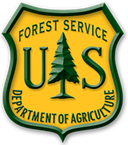|
Fire managers on the Mogollon Rim Ranger District have cancelled plans to burn at Upper Beaver Creek Project today.
Flagstaff Ranger District fire managers are only burning approximately 25 acres on the Woody Ridge Project. Smoke will be significantly lighter from today’s efforts, though
residual smoke from the overall project may still be noticeable as stumps and logs in the area continue to smolder. Ventilation conditions are better today and will help disperse smoke faster. No burns are planned for tomorrow, November 21, or next week. Crews will reevaluate conditions and opportunities for broadcast burns and/or pile burns after the holiday.
From:
USDA FS NEWS List [mailto:USDA-FS-NEWS@xxxxxxxxxxxxxxxx] On Behalf Of Magee, Brienne U -FS
U.S. Dept. of Agriculture U.S. Forest Service Coconino National Forest www.flickr.com/photos/coconinonationalforest For Immediate Release Tuesday, November 19, 2014
Media Contact:
Brienne Magee – cell: 928-310-6035
Smoke expected in west Flagstaff tonight; Woody Ridge and Upper Beaver Creek prescribed burns to continue tomorrow Flagstaff,
Ariz. – Ignitions are complete on the Woody Ridge and Upper Beaver Creek
prescribed burns planned for today. Smoke from the Woody Ridge Project – the old tornado area – is expected to settle in west Flagstaff tonight and tomorrow morning. Tomorrow, fire managers plan to continue efforts in both projects.
Prescribed fires are essential tools for restoring the forests in our fire-adapted ecosystem, and smoke is an unavoidable byproduct of these vital efforts. Fire managers
strive to minimize smoke impacts to the community as much as possible. They burn when winds and other atmospheric conditions will push the majority of smoke away from homes; they’ll burn larger sections at a time to ultimately limit the number of days smoke
is in the air; and they work closely with ADEQ, partners in the Ponderosa Fire Advisory Council, as well as neighboring forests to monitor air quality.
Crews also seek opportunities to use slash from thinning projects around the community instead of burning it –it is often used as filler at the landfill and offered as firewood
to community members. However, no matter how many mechanical means we employ to restore our forests, fire is a natural and necessary part of this ecosystem, and a restoration tool that cannot be replaced by any mechanical means. Forests need the frequent,
low-intensity fire to remove accumulated smaller fuels and recycle nutrients into the soils to promote healthy vegetation and wildlife habitat. A healthier forest is a safer forest for firefighters and residents when wildfires inevitably occur. Notifications of upcoming prescribed burns are provided regularly throughout the season. The public can find this information online or through the recorded hotline. Contact
your local Coconino National Forest office for additional information.
### USDA is an equal opportunity provider, employer and lender. To file a complaint of discrimination, write to USDA, Office of the Assistant
Secretary for Civil Rights, Office of Adjudication, 1400 Independence Ave., SW, Washington, DC 20250-9410, or call (866) 632-9992 (toll-free customer service), (800) 877-8339 (local or federal relay) or (866) 377-8642 (relay voice users).
|



